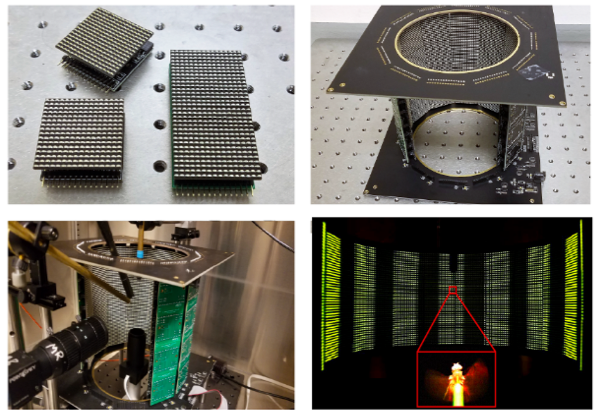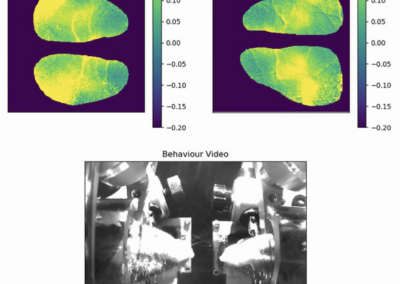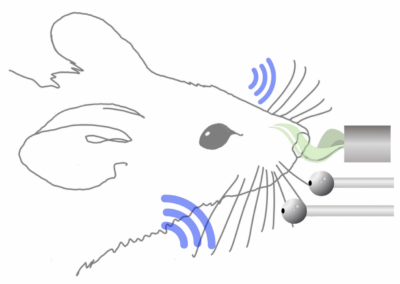Modular LED Displays

Visual stimuli are an effective way to study brain function and behavior in all animals. Specialized LED displays have become an increasingly popular tool in neuroscience experiments. However, commercial LEDs have primarily been designed and optimized for use in humans, leading to limitations in experiments with animals with different visual processing capacities. To address the necessity of complex visual stimuli for diverse experiments, Matthew Isaacson and colleagues in the Reiser Lab at Janelia have developed a modular LED display system with their work on Drosophila. Over the past 15 years, this group has continued to develop and update their system (the current system described here is referred to as “G4” for 4th generation) to optimize all aspects of their design. Below, we summarize the design, software, and advanced features of the G4 modular display system.
Design/architecture
The system is made up of LED panels of various sizes that can be arranged/grouped in different shapes for diverse setups. Compared to the G3, the G4 has higher resolution, faster display refresh, and more precise synchronization.
Software
All software was developed in MATLAB, and complete documentation with tutorials is available on the Reiser Lab GitHub. For users with all levels of coding experience, the group provides tools to generate stimuli, design experiments, and process data (with the option to update code as desired).
G4 features utilized in Drosophila experiments
- Upper limits of motion: Using the fast refresh rate of the G4, the group implemented different visual stimuli over a range of speeds and recorded optomotor responses for motion vision in flies, which has not previously been done. Recording behavioral reactions to visual motion allowed the group to identify complete speed tuning of flight reactions, including the speed at which stimuli are too fast for flies to detect motion.
- Mapping visual projection neurons: To characterize the response properties and directionality of visual projection neurons, the group designed a large, flexible G4 display that is presented across the entire field of view. The display can be shifted up or down while rotating around the fly. The team developed a custom head-mount to reduce occlusion and improve the field of view while maintaining stable access to visualize neurons with 2-photon imaging. Design files for the head-mount is available on the Reiser Lab GitHub.
- Brightness control: The group deciphered sensitivity between color (UV versus green) and motion by utilizing the system’s precise brightness control to determine a point of isoluminance based on optomotor visual responses. This combination of LEDs (which is not found in commercial displays because UV is outside the human visible spectrum) would also work well in experiments to study color vision in zebrafish or mice.
- Virtual reality: Closed-loop modes can be used to customize virtual reality (VR) experiments, where visual stimuli can be flexibly controlled and provide feedback. A common VR experiment in flies is a stripe fixation paradigm, where flies preferentially orient flight towards a vertical bar. G4 has all possible rotational positions of a stripe pattern for this paradigm pre-rendered. Additionally, VR requires a very fast feedback system, so the team tested a range of feedback delays in the stripe fixation task. They determined that G4 is more than fast enough to create a VR environment for Drosophila. Finally, to make the environment more naturalistic, they implemented the same stripe, but over a green background that had a bright sky and darker ground (mimicking open land). They found that the flies oriented their positions to both dimensions (the stripe and the horizon).
The G4 display system provides a means to deliver complex visual stimuli in a diverse range experiments. The thorough work in developing this tool opens the door for future studies investigating visual circuits and behavioral responses to visual stimuli in many species.
This research tool was created by your colleagues. Please acknowledge the Principal Investigator, cite the article in which the tool was described, and include an RRID in the Materials and Methods of your future publications. RRID:SCR_022704
Read the preprint!
Check out the preprint to learn more!
GitHub site
Access to software and tutorials!






